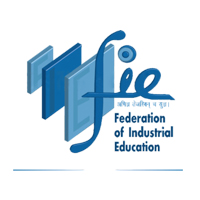
With the advent of governmental initiatives like Aatmanirbhar Bharat and Make in India, the focus of Indian industry has shifted towards cultivating a proactive and capable workforce that meets international standards. However, the persistent gap between academia and the corporate world remains a significant challenge, demanding immediate attention. The evolving dynamics of today's industrial landscape—characterized by Industry 4.0—place specific demands on new graduates, including navigating economic uncertainties, adapting to technological advancements like automation and artificial intelligence, and meeting fluctuating market demands. In this context, the employment landscape appears challenging, with job security increasingly uncertain due to global economic fluctuations.
Addressing the Disconnect Between Academia and Industry
Despite the emphasis on building a skilled workforce, the current education system, heavily rooted in theoretical knowledge, struggles to keep pace with the rapidly changing industry needs. The foundation phase of education is predominantly theory-based, offering limited practical exposure to the skills required in today’s workplace. The National Education Policy (NEP) 2020 has highlighted concerns regarding the fragmented nature of Higher Education Institutions (HEIs), which often prioritize traditional subjects over essential skill development. Moreover, the specialization phase of education, which should ideally focus on industry-relevant skills, remains overly dependent on classroom instruction. Internships, once vital for capacity building and industry exposure, have become mere formalities, offering little real-world value.
Identifying the Gaps
- Curriculum Gap: Current curricula do not meet the fast-evolving requirements of the industry, leaving graduates ill-prepared for the workforce.
- Internship Gap: Many internships lack substance, failing to provide the skill-based exposure necessary for students to thrive in real-world settings.
- Faculty Gap: Both faculty expertise and educational content lag behind industry developments, leading to a misalignment between academic instruction and industry expectations.
- Skill Gap: Students often graduate without the technical and soft skills essential for their careers, as finishing schools do not adequately emphasize skill development.
- University-Industry Interaction Gap: Limited interaction between universities and industries results in outdated syllabi that do not reflect the current needs of the job market.
- Expectations Gap: Graduates often enter the workforce with unrealistic expectations, assuming that a degree alone will secure their success, without the necessary skills or proactive attitude.
Steps to Bridge the Gap
- Encouraging Creative Thinking: Institutions should promote out-of-the-box thinking, encouraging students to engage in activities such as college fests, mock startups with a business focus, and hackathons that foster practical skills.
- Syllabus Integration: Collaboration between universities and industries is crucial to ensure that academic curricula include practical field exercises aligned with industry needs.
- Innovative Internship Programs: Industries should design internships that go beyond the basics, incorporating research and fieldwork to provide valuable workplace experience.
- Skill Development Integration: Beyond theoretical learning, educational programs should focus on building students' capacity and enhancing their capabilities through hands-on training.
- Knowledge Exchange Ecosystem: Establishing a knowledge upgrade ecosystem where faculty and students engage in continuous learning and cognitive skill development is essential.
- Industry-Sponsored Skill Development Centers: Collaboration between industry and academia should lead to the creation of multidisciplinary skill development centers to address the skill gap.
- Faculty-Industry Interaction: Faculty members should engage with industries to stay updated on current trends and requirements, ensuring that their teaching remains relevant.
The Path Forward
Recognizing and addressing the persistent gap between academia and the corporate world is imperative. Merely possessing qualifications is no longer sufficient; students must acquire practical skills and industry-relevant knowledge to be truly employable. Bridging the academia-industry gap involves providing students with ample opportunities for hands-on experiences, practical training, and exposure to real-world scenarios. As the saying goes, “Tell me and I forget, teach me and I remember, involve me and I learn.” This approach is key to developing a workforce that is not only knowledgeable but also skilled and adaptable to the demands of the modern job market.
In setting practical and achievable goals, it is crucial to avoid getting bogged down by the accreditation process and instead focus on a holistic review of curricula. This includes integrating practical, skill-based training that is essential for bridging the gap between education and employment. By taking these steps, we can ensure that our educational system produces graduates who are not only academically qualified but also industry-ready, capable of driving the nation's progress in a competitive global economy.




